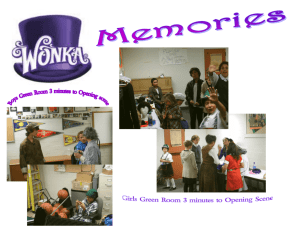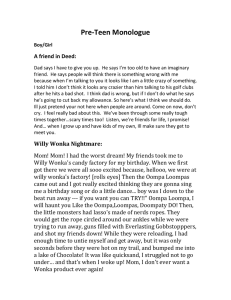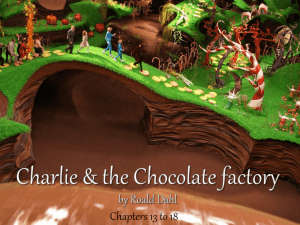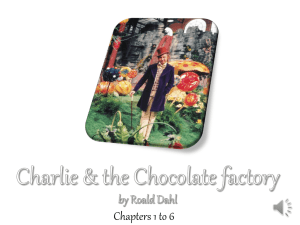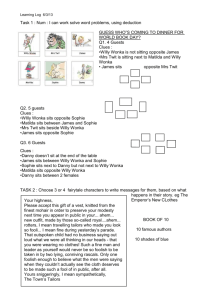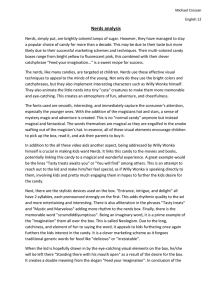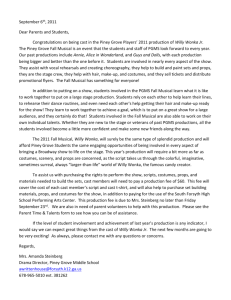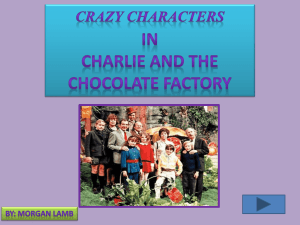Nerds Botev - nickellyear12english
advertisement
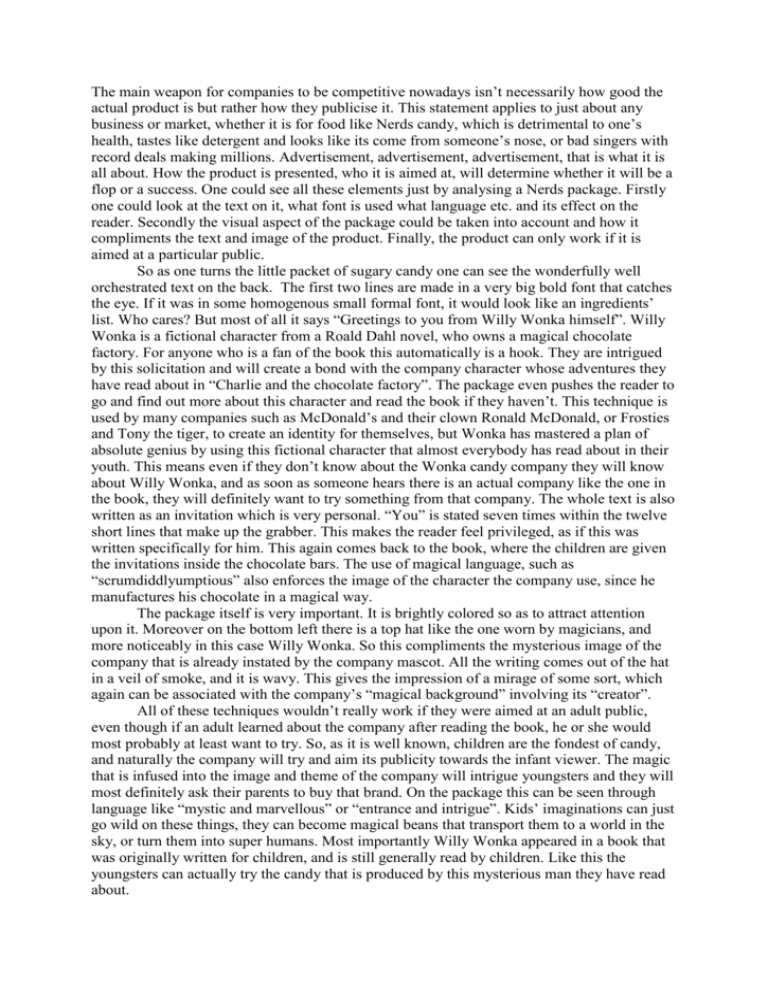
The main weapon for companies to be competitive nowadays isn’t necessarily how good the actual product is but rather how they publicise it. This statement applies to just about any business or market, whether it is for food like Nerds candy, which is detrimental to one’s health, tastes like detergent and looks like its come from someone’s nose, or bad singers with record deals making millions. Advertisement, advertisement, advertisement, that is what it is all about. How the product is presented, who it is aimed at, will determine whether it will be a flop or a success. One could see all these elements just by analysing a Nerds package. Firstly one could look at the text on it, what font is used what language etc. and its effect on the reader. Secondly the visual aspect of the package could be taken into account and how it compliments the text and image of the product. Finally, the product can only work if it is aimed at a particular public. So as one turns the little packet of sugary candy one can see the wonderfully well orchestrated text on the back. The first two lines are made in a very big bold font that catches the eye. If it was in some homogenous small formal font, it would look like an ingredients’ list. Who cares? But most of all it says “Greetings to you from Willy Wonka himself”. Willy Wonka is a fictional character from a Roald Dahl novel, who owns a magical chocolate factory. For anyone who is a fan of the book this automatically is a hook. They are intrigued by this solicitation and will create a bond with the company character whose adventures they have read about in “Charlie and the chocolate factory”. The package even pushes the reader to go and find out more about this character and read the book if they haven’t. This technique is used by many companies such as McDonald’s and their clown Ronald McDonald, or Frosties and Tony the tiger, to create an identity for themselves, but Wonka has mastered a plan of absolute genius by using this fictional character that almost everybody has read about in their youth. This means even if they don’t know about the Wonka candy company they will know about Willy Wonka, and as soon as someone hears there is an actual company like the one in the book, they will definitely want to try something from that company. The whole text is also written as an invitation which is very personal. “You” is stated seven times within the twelve short lines that make up the grabber. This makes the reader feel privileged, as if this was written specifically for him. This again comes back to the book, where the children are given the invitations inside the chocolate bars. The use of magical language, such as “scrumdiddlyumptious” also enforces the image of the character the company use, since he manufactures his chocolate in a magical way. The package itself is very important. It is brightly colored so as to attract attention upon it. Moreover on the bottom left there is a top hat like the one worn by magicians, and more noticeably in this case Willy Wonka. So this compliments the mysterious image of the company that is already instated by the company mascot. All the writing comes out of the hat in a veil of smoke, and it is wavy. This gives the impression of a mirage of some sort, which again can be associated with the company’s “magical background” involving its “creator”. All of these techniques wouldn’t really work if they were aimed at an adult public, even though if an adult learned about the company after reading the book, he or she would most probably at least want to try. So, as it is well known, children are the fondest of candy, and naturally the company will try and aim its publicity towards the infant viewer. The magic that is infused into the image and theme of the company will intrigue youngsters and they will most definitely ask their parents to buy that brand. On the package this can be seen through language like “mystic and marvellous” or “entrance and intrigue”. Kids’ imaginations can just go wild on these things, they can become magical beans that transport them to a world in the sky, or turn them into super humans. Most importantly Willy Wonka appeared in a book that was originally written for children, and is still generally read by children. Like this the youngsters can actually try the candy that is produced by this mysterious man they have read about. In conclusion it is possible to see that in just this small package an absolute masterpiece of advertisement has been created to make little children beg their parents for a box of Wonka candy. From the lettering, through the color of the candy, to the company mascot, all has been carefully planned out to attract more and more consumers.
